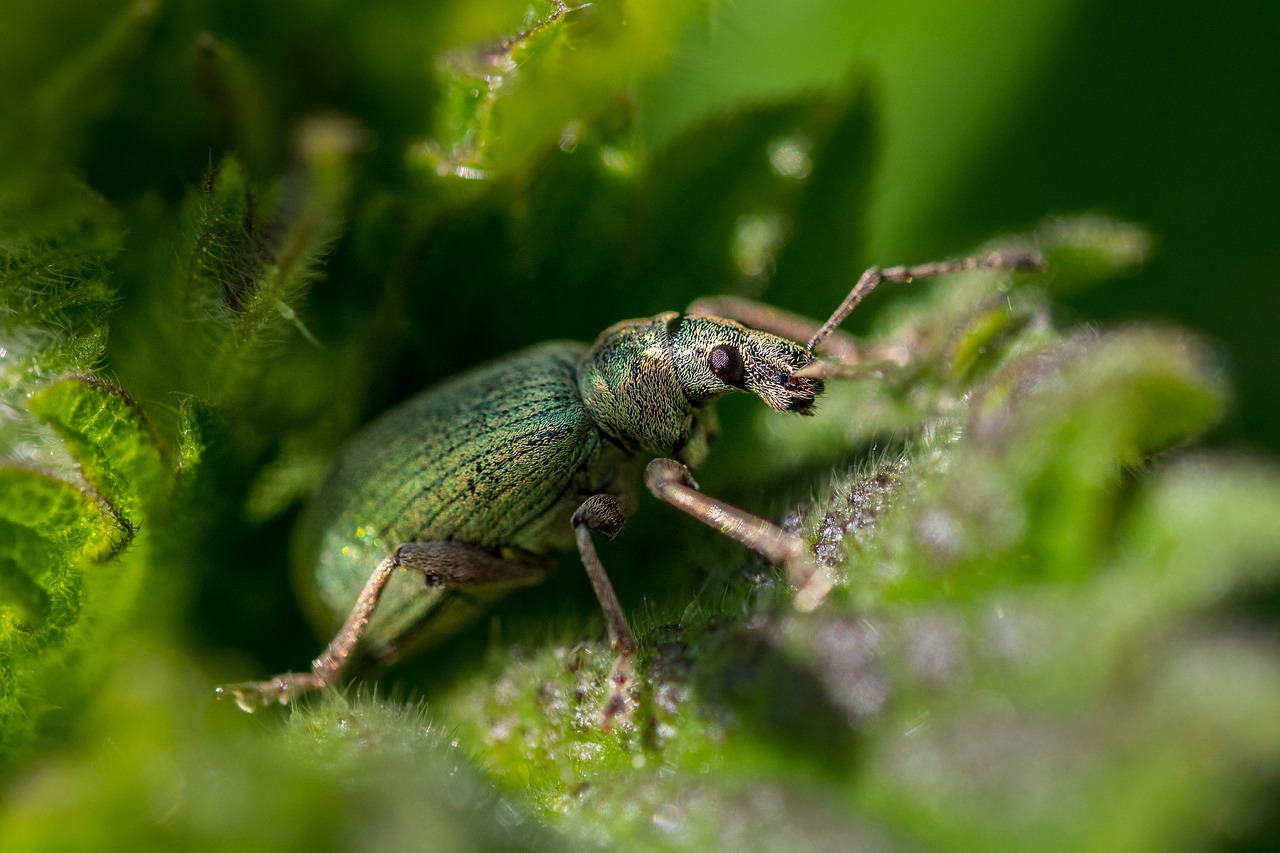12 Steps to Preventing Garden Pests Naturally: A Guide for Organic Gardeners
Antony Thilak W |
24 May, 2023 |

Gardening is a wonderful and fulfilling activity that allows us to connect with nature and cultivate our own food. However, dealing with garden pests can quickly turn our green oasis into a battleground. Fortunately, there are effective and natural methods to prevent pests from wreaking havoc on our plants, without resorting to harmful chemicals. In this blog post, we will explore 12 steps you can take to naturally prevent garden pests and create a thriving and pest-free garden.
1. Start with Healthy Soil
The foundation of a successful garden lies in healthy soil. Healthy soil provides essential nutrients and creates an environment that allows plants to grow strong and resist pests. To enhance your soil, incorporate compost and organic matter, such as well-rotted manure or leaf mold. These organic materials enrich the soil, improve its structure, and promote beneficial microbial activity. Healthy soil also attracts beneficial insects, such as predatory beetles and parasitic wasps, which help control pest populations naturally.
2. Choose Pest-Resistant Plants
Selecting pest-resistant plant varieties is an effective strategy to ward off garden pests. Look for plants that have been specifically bred for resistance to common pests in your area. Plant breeders have developed varieties that exhibit natural resistance to pests, making them less susceptible to damage. Additionally, consider native plants that have adapted to local conditions and pests over time. Native plants often possess natural defenses and can be more resilient against local pests.
3. Rotate Your Crops
Crop rotation is a valuable practice for preventing pests and diseases. Many pests and diseases have specific host plants they prefer. By rotating crops each year, you disrupt the life cycles of these pests, making it more difficult for them to establish and proliferate. Crop rotation is especially important for vegetables, as many pests are specific to certain plant families. For example, avoid planting tomatoes in the same spot year after year, as this can lead to a buildup of tomato pests in the soil. Instead, rotate tomatoes with plants from different families, such as beans or lettuce, to break the pest cycle.
4. Practice Companion Planting
Companion planting is the art of strategically placing plants together to create mutually beneficial relationships. Certain plants have natural abilities to repel pests or attract beneficial insects. By incorporating companion plants into your garden, you can naturally deter pests and promote a healthy ecosystem. For instance, planting marigolds alongside tomatoes helps repel nematodes, microscopic worms that can damage tomato roots. Similarly, herbs like basil, thyme, and rosemary have strong scents that repel pests and improve the flavor of neighboring vegetables. Explore companion planting combinations that suit your garden and the pests you want to control.
5. Use Physical Barriers
Physical barriers are an effective way to keep pests out of your garden. By creating a physical barrier, you can prevent pests from accessing your plants and causing damage. Row covers, made from lightweight fabric or mesh, are commonly used to protect plants from insects, birds, and other pests. These covers allow sunlight, air, and water to reach the plants while creating a protective shield. Netting is another useful tool for safeguarding specific crops, such as berries, from hungry birds. Choose barriers that are appropriate for the size and type of pest you are trying to keep out.
6. Utilize Natural Pesticides
When pest problems arise, natural pesticides can be a valuable tool for control. Natural pesticides are derived from botanical extracts, minerals, or other natural substances and are less harmful to the environment and beneficial to insects than synthetic chemicals. One example is neem oil, which is effective against aphids, spider mites, and other soft-bodied insects. Neem oil disrupts the pests' feeding and reproductive systems, leading to their demise. Diatomaceous earth,
a powder made from fossilized remains of marine organisms is another natural pesticide. When pests come into contact with diatomaceous earth, it damages their exoskeletons, ultimately causing dehydration and death. Always follow the instructions carefully when using natural pesticides, as they can be harmful if not used correctly.
7. Encourage Beneficial Insects
Beneficial insects play a vital role in natural pest control by preying on garden pests. Ladybugs, also known as lady beetles, are voracious consumers of aphids, mealybugs, and other soft-bodied pests. They can be purchased or attracted to your garden by planting flowers that provide nectar and pollen. Praying mantises are another beneficial insect that feeds on a variety of pests, including caterpillars, aphids, and flies. Creating a welcoming environment for beneficial insects involves providing food, water, and shelter. By avoiding the use of harmful pesticides, you protect these helpful allies and maintain a balanced ecosystem in your garden.
8. Set Traps
Traps can be an effective method to control specific pests in your garden. Sticky traps, coated with a sticky substance, are useful for capturing flying insects such as whiteflies and fungus gnats. These traps attract pests, which then become stuck to the adhesive surface. Pheromone traps are another type of trap that uses synthetic insect pheromones to lure pests into a trap where they are unable to escape. These traps are commonly used to control moths and other flying insects. When using traps, it is essential to select the right type for the pest you are targeting and place them strategically in your garden.
9. Practice Cultural Controls
Cultural controls are practices that modify the growing environment to discourage pests and diseases. Implementing these measures helps create conditions that are less favorable for pests, reducing their impact on your plants. Good garden hygiene is a fundamental cultural control. Regularly remove fallen leaves, plant debris, and weeds, as they can provide shelter and breeding grounds for pests. Pruning plants to improve air circulation and sunlight penetration also minimizes the risk of fungal diseases. Additionally, practicing proper spacing between plants prevents overcrowding, which can create a conducive environment for pests and diseases.
10. Use Organic Fertilizers
Promoting healthy plant growth is a crucial aspect of pest prevention. Organic fertilizers, such as compost and well-rotted manure, provide essential nutrients to plants while enhancing soil fertility. Unlike synthetic fertilizers, organic fertilizers nourish the soil and support beneficial microorganisms that contribute to a healthy ecosystem. Applying organic fertilizers according to recommended rates and schedules helps plants grow vigorously, making them more resilient against pest attacks. However, be cautious not to overapply organic fertilizers, as this can lead to nutrient imbalances and other problems.
11. Practice Good Watering Techniques
Proper watering techniques not only support plant health but also help prevent pest infestations. Overly wet conditions can create an ideal environment for fungal diseases, while underwatering can stress plants and make them more susceptible to pests. Watering in the early morning allows plant leaves to dry before nightfall, reducing the risk of fungal diseases. Additionally, drip irrigation or a soaker hose provides water directly to the soil, minimizing moisture on the foliage and deterring pests that thrive in humid conditions.
12. Maintain Garden Hygiene
Maintaining good garden hygiene is essential for preventing pest infestations. Promptly remove any diseased or damaged plants from your garden, as they can attract pests and serve as sources of infection. Regularly inspect your plants for signs of pests or diseases and take immediate action if you detect any issues. Keep your garden clean and free of debris, as these hiding places can harbor pests. By staying vigilant and proactive, you can nip pest problems in the bud
and prevent them from spreading throughout your garden.
Conclusion:
In conclusion, if you are looking for farm plots near Bangalore or managed farmland for sale near Bangalore, there are plenty of options available. Investing in farmland can be a rewarding venture, allowing you to reconnect with nature and cultivate your own produce. Whether you are interested in organic farming, or sustainable agriculture, or simply want to enjoy the peacefulness of the countryside, there are farm plots near Bangalore that can meet your needs. By exploring the available options and considering factors such as location, soil quality, and infrastructure, you can find the perfect piece of land to fulfill your farming aspirations. With careful planning and dedication, you can embark on a fulfilling journey in the world of farming and create a sustainable and prosperous future.
